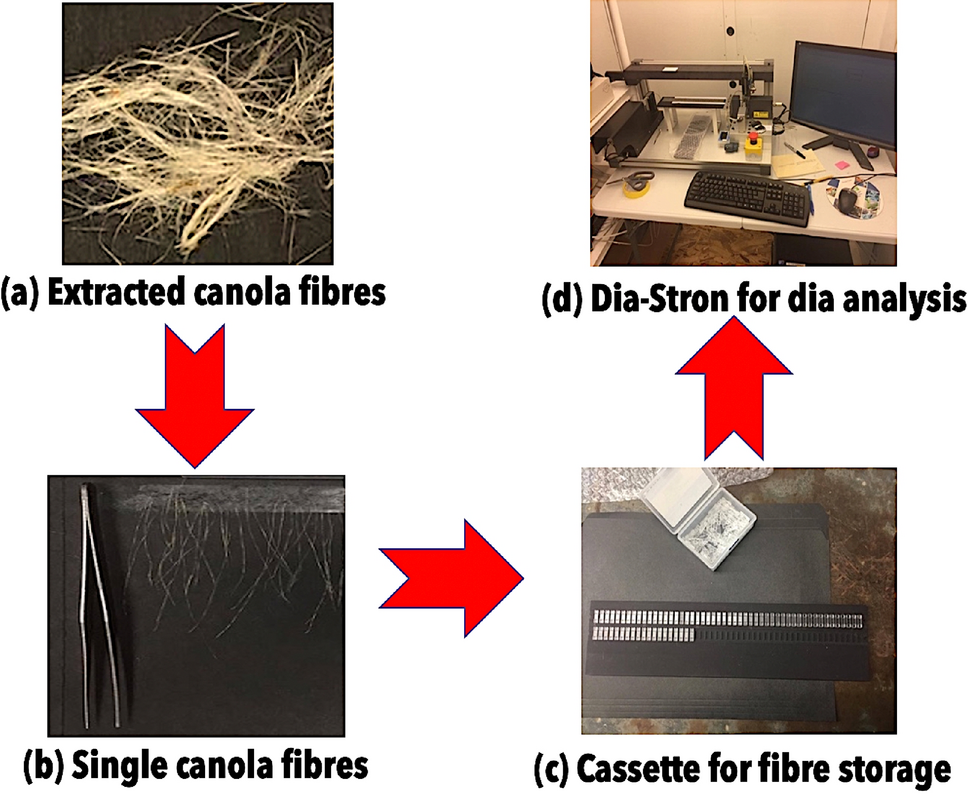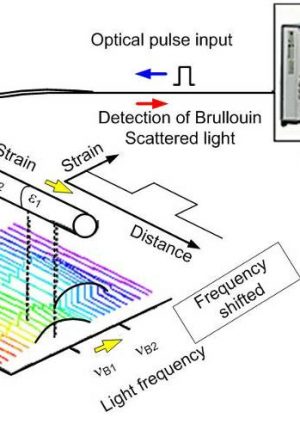How an Optical Fibre Diameter Analyser Enhances Manufacturing Accuracy
How an Optical Fibre Diameter Analyser Enhances Manufacturing Accuracy
Blog Article
Optimize Your Fiber Optic Performance: Recognizing Optical Fiber Diameter Analyser Modern Technology
The performance of fiber optic systems is seriously influenced by the accuracy of their diameter, an element frequently forgot in the pursuit of ideal signal integrity. Understanding the technology behind optical fibre size analysers reveals the elaborate equilibrium in between measurement accuracy and production top quality.
Importance of Optical Fiber Size
The size of optical fibre plays an essential function in determining the performance and efficiency of interaction systems. On the other hand, smaller sized sizes have a tendency to sustain less modes, which can improve signal clarity and lower crosstalk.

In addition, recognizing the diameter's effects can result in set you back financial savings by minimizing the requirement for signal amplification and repeaters in extensive networks (optical fibre diameter analyser). To conclude, the value of optical fiber size can not be overemphasized, as it directly impacts the general performance and integrity of modern-day communication systems

Exactly How Size Impacts Signal Quality
Signal quality in optical fiber systems pivots substantially on the diameter of the fibre. The size affects numerous key criteria, including depletion, data transfer, and modal dispersion. A smaller sized size can result in greater attenuation prices, leading to signal loss as light travels with the fiber. This depletion can jeopardize the integrity of the transmitted data, causing a decline in signal high quality, especially over cross countries.
On the other hand, bigger diameters usually permit improved light capture and reduced modal dispersion, enhancing signal clarity. In multimode fibres, a bigger core size can sustain numerous light settings, yet it may also introduce intermodal dispersion, which can break down signal top quality. Therefore, choosing the optimal fiber diameter is critical for achieving the preferred performance in details applications.
Furthermore, the interaction in between the fiber diameter and the wavelength of the light used plays a vital duty in identifying the reliable transmission distance and total signal integrity. Recognizing just how fibre size affects signal top quality is vital for network designers and designers aiming to enhance optical fibre systems for reliable, high-speed data transmission.
Overview of Diameter Analyser Modern Technology
In many optical fibre production procedures, exact dimension of fiber size is crucial for guaranteeing regular performance and high quality (optical fibre diameter analyser). Diameter analysers are sophisticated tools created to analyze the physical measurements of optical fibers with high precision. They utilize advanced optical and laser modern technologies to determine the size, ovality, and concentricity of the fiber, hence giving essential information for quality control
These analysers can run in-line throughout the manufacturing procedure or as component of off-line screening protocols. In-line systems allow real-time monitoring, allowing suppliers to adjust criteria quickly, thereby keeping optimal production conditions. Off-line analysers, on the other hand, offer thorough assessments of batches, guaranteeing that any deviations from defined tolerances are identified and attended to.
Diameter analysers considerably contribute to the reduction of defects in optical fibres, boosting general product dependability. By constantly measuring crucial parameters, these innovations promote conformity with sector standards and specs. As the demand for high-performance optical fibres proceeds to rise, the role of size analysers becomes significantly essential in attaining the wanted quality and efficiency criteria in fiber optic systems.
Secret Features of Fibre Size Analysers
Although numerous designs of fiber size analysers exist, they generally share a number of essential functions that boost their capability and dependability. Among the most considerable attributes is high-resolution measurement capabilities, which ensure specific diameter analyses, vital for maintaining quality assurance in fiber production. Furthermore, many analysers incorporate sophisticated optical sensors developed to find minute variants in fiber size, thus supplying vital information for procedure optimization.
An additional essential attribute is real-time surveillance, enabling operators to obtain prompt feedback on fiber size throughout the production procedure (optical fibre diameter analyser). This ability helps with rapid changes and decreases the likelihood of issues. Numerous analysers additionally come geared up with easy to use interfaces, allowing operators to easily navigate with data and settings outcomes
Moreover, durable data storage and evaluation functionalities are vital click for more for tracking historic efficiency patterns and ensuring conformity with sector standards. Some versions even provide connectivity alternatives for integration right into existing production control systems, boosting general functional effectiveness. Portable and portable styles allow for versatile deployment within manufacturing environments, guaranteeing that quality assurance procedures are seamless and efficient. These features jointly add to the effectiveness of fibre diameter analysers in enhancing fibre optic performance.
Best Practices for Fiber Optimization

First, routine calibration of optical fibre size analysers is crucial. This makes sure accurate measurements and reduces hop over to these guys prospective disparities that could impact efficiency. Next, maintaining a clean workplace is crucial; dust and contaminants can result in indicate deterioration.
Furthermore, it is necessary to pick fibres that satisfy certain application demands. This involves assessing aspects such as depletion, data transfer, and environmental conditions. Correct installation methods must additionally be stuck to, consisting of avoiding sharp bends and excessive stress, which can jeopardize fiber honesty.
In addition, using innovative monitoring systems can assist in real-time efficiency assessments, enabling prompt recognition of concerns. Normal testing and maintenance need to be performed to make sure that fibres stay within ideal functional specifications.
Finally, training workers on the latest fibre optimization modern technologies and methods will boost their ability to implement effective strategies. By following these best methods, organizations can substantially boost the efficiency and life-span of their optical fibre systems, guaranteeing effective interaction and information transfer.
Final Thought
Finally, the combination of optical fiber size analyser modern technology is important for taking full advantage of fiber optic performance. By making sure specific dimensions of fibre measurements, these analysers substantially enhance signal quality and reduce losses during data transmission. Normal calibration and upkeep of the analysers are crucial to support optimum efficiency and compliance with market criteria. Eventually, the application of this modern technology assists in improved data my review here transmission rates and enhances signal stability, contributing to the total effectiveness of fiber optic systems.
Signal high quality in optical fibre systems pivots significantly on the diameter of the fiber.In several optical fibre manufacturing processes, accurate measurement of fiber size is important for making sure consistent efficiency and high quality. As the demand for high-performance optical fibers continues to rise, the function of size analysers comes to be progressively vital in achieving the desired high quality and efficiency criteria in fiber optic systems.
These functions jointly contribute to the efficacy of fibre diameter analysers in maximizing fiber optic performance.
In conclusion, the combination of optical fiber size analyser modern technology is essential for optimizing fiber optic efficiency.
Report this page